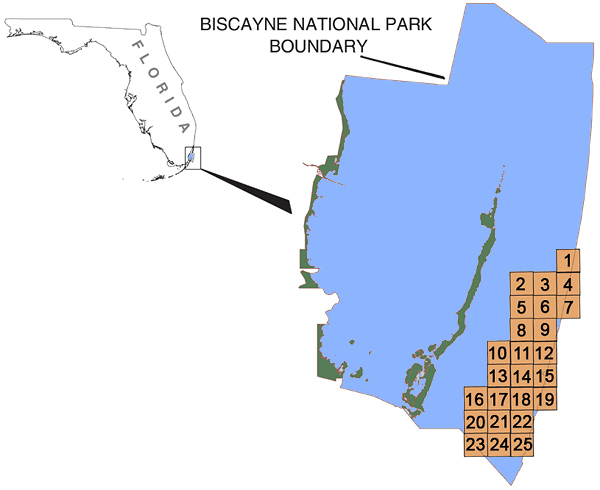| Description |
Lidar is a remote sensing technique that uses laser light to detect, range, or identify remote objects based on light reflected by the object or emitted through it subsequent fluorescence. Airborne ranging lidar is now being applied in coastal environments to produce accurate, cost-efficient elevation datasets with high data density. The USGS in cooperation with NASA and NPS is using airborne lidar to measure the submerged topography of the north Florida reef tract; secondarily, the data will be assessed for its potential in terms of benthic characterization. Elevation measurements were collected over Biscayne National Park using the NASA Experimental Advanced Airborne Research Lidar (EAARL), a pulsed laser ranging system mounted onboard an aircraft to measure subaerial and submarine coastal topography. With the NASA EAARL lidar system, submarine data is generally acquired to a maximum of approximately 1.5 secchi depths (a measure of water clarity). The system uses a high frequency laser beam directed at the earth's surface through an opening in the bottom of the aircraft's fuselage. The laser system records the time difference between emission of the laser beam and the reception of the reflected laser signal in the aircraft. The Experimental Advanced Airborne Research Lidar, developed by the National Aeronautics and Space Administration (NASA) Wallops Flight Facility (WFF) in Virginia, measures ground elevation with a vertical resolution of roughly 15 centimeters. A sampling rate of up to 3 kHz results in an extremely dense spatial elevation data set. The EAARL system is typically flown at 300 m altitude AGL, resulting in a 240 m swath for each flightline. Data collection occurred with approximately 50% overlap between flightlines, resulting in about one laser sounding per square meter. The data were processed by the USGS Center for Coastal and Watershed Studies to produce 1meter resolution raster images that can be easily ingested into a Geographic Information System (GIS). The data were organized as 2 km by 2 km data tiles in 32bit floatingpoint integer GeoTiff format. For more information on Lidar science and the Experimental Advanced Airborne Research Lidar (EAARL) system and surveys, see http://ngom.usgs.gov/dsp/overview/index.php and http://ngom.usgs.gov/dsp/tech/eaarl/index.php . [More]
|
